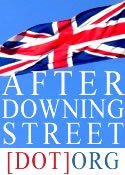Lord Butler 402-405
SIS MAIN SOURCES
402. Of the two dominant sources, the first reported accurately and authoritatively on some key issues. On production and stocks of chemical and biological weapons and agents, he could only report what he learned from others in his circle of high-level contacts in Baghdad.
403. The second dominant source remains the subject of continuing SIS validation. In 2002, SIS considered him to be an established and reliable source. His intelligence on other subjects had previously been corroborated. We therefore understand why SIS decided that it should issue a number of reports from him quoting a new sub-source on Iraqi chemical and biological programmes and intentions. Even then, they properly included a caution about the sub-source’s links to opposition groups and the possibility that his reports would be affected by that. We have been told that post-war validation by SIS has raised serious doubts about the reliability of reporting from this new sub-source. We conclude that this stream of reporting that underpinned JIC assessments on Iraqi production and possession of chemical and biological weapons must be open to serious doubt.
404. In addition to these two dominant sources, SIS’s post-war validation has led them to conclude that two further main sources should continue to be regarded as reliable. We have, however, noted that reports from those sources tended to present a less worrying view of Iraqi chemical and biological weapons capability than that from the sources whose reporting is now subject to doubt.
405. Finally, in mid-September 2002 SIS issued a report, described as being from ‘a new source on trial’, on Iraqi production of chemical and biological agent. Although this report was received too late for inclusion in the JIC assessment of 9 September, it did provide significant assurance to those drafting the Government’s dossier that active, current production of chemical and biological agent was taking place. A second report from the new source, about the production of a particular chemical agent, was received later in September 2002. In July 2003, however, SIS withdrew the two reports because the sourcing chain had by then been discredited. SIS also interviewed the alleged sub-source for the intelligence after the war, who denied ever having provided the information in the reports. We note, therefore, that the two reports from this source, including one which was important in the closing stages of production of the Government’s September dossier, must now be treated as unsafe.
http://www.butlerreview.org.uk/report
402. Of the two dominant sources, the first reported accurately and authoritatively on some key issues. On production and stocks of chemical and biological weapons and agents, he could only report what he learned from others in his circle of high-level contacts in Baghdad.
403. The second dominant source remains the subject of continuing SIS validation. In 2002, SIS considered him to be an established and reliable source. His intelligence on other subjects had previously been corroborated. We therefore understand why SIS decided that it should issue a number of reports from him quoting a new sub-source on Iraqi chemical and biological programmes and intentions. Even then, they properly included a caution about the sub-source’s links to opposition groups and the possibility that his reports would be affected by that. We have been told that post-war validation by SIS has raised serious doubts about the reliability of reporting from this new sub-source. We conclude that this stream of reporting that underpinned JIC assessments on Iraqi production and possession of chemical and biological weapons must be open to serious doubt.
404. In addition to these two dominant sources, SIS’s post-war validation has led them to conclude that two further main sources should continue to be regarded as reliable. We have, however, noted that reports from those sources tended to present a less worrying view of Iraqi chemical and biological weapons capability than that from the sources whose reporting is now subject to doubt.
405. Finally, in mid-September 2002 SIS issued a report, described as being from ‘a new source on trial’, on Iraqi production of chemical and biological agent. Although this report was received too late for inclusion in the JIC assessment of 9 September, it did provide significant assurance to those drafting the Government’s dossier that active, current production of chemical and biological agent was taking place. A second report from the new source, about the production of a particular chemical agent, was received later in September 2002. In July 2003, however, SIS withdrew the two reports because the sourcing chain had by then been discredited. SIS also interviewed the alleged sub-source for the intelligence after the war, who denied ever having provided the information in the reports. We note, therefore, that the two reports from this source, including one which was important in the closing stages of production of the Government’s September dossier, must now be treated as unsafe.
http://www.butlerreview.org.uk/report




0 Comments:
Post a Comment
<< Home